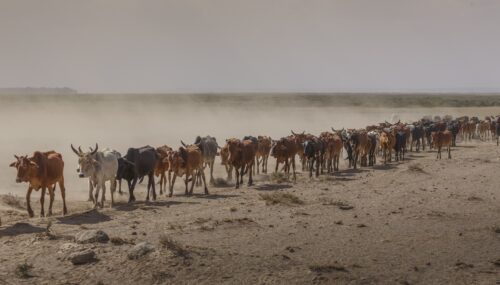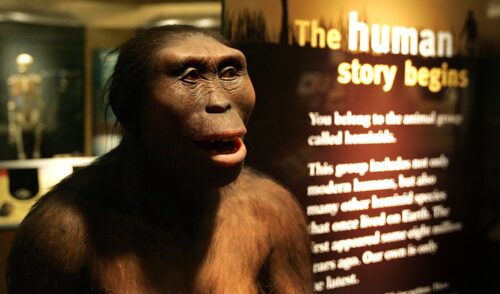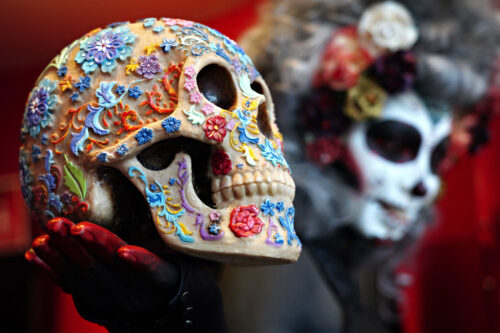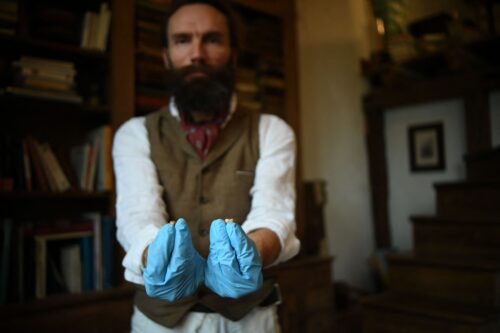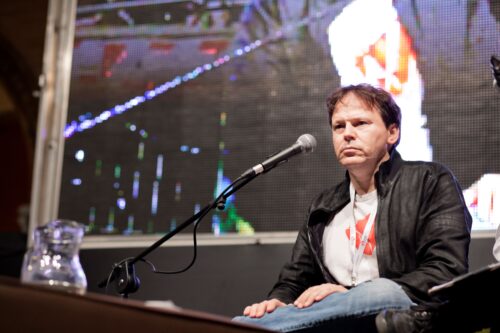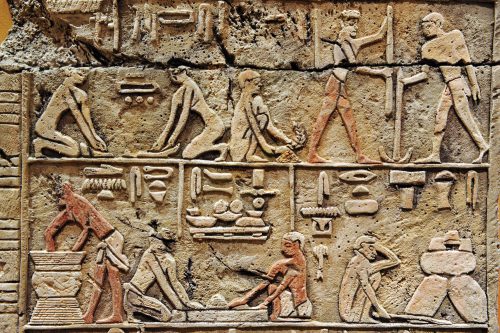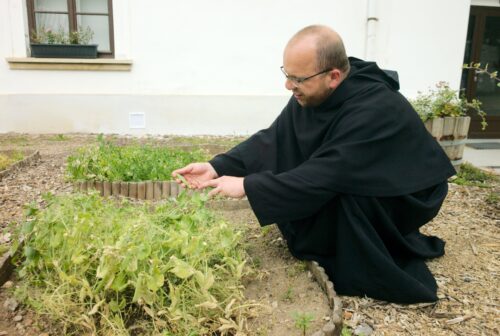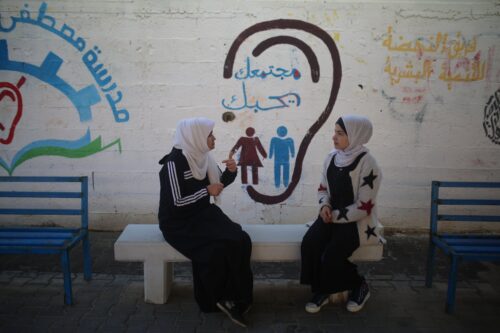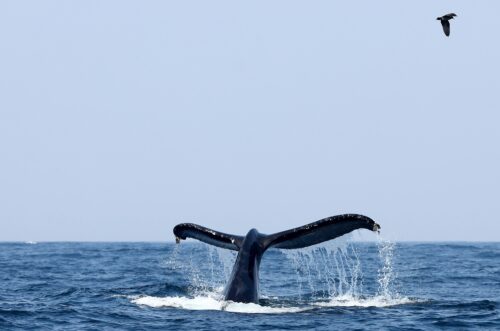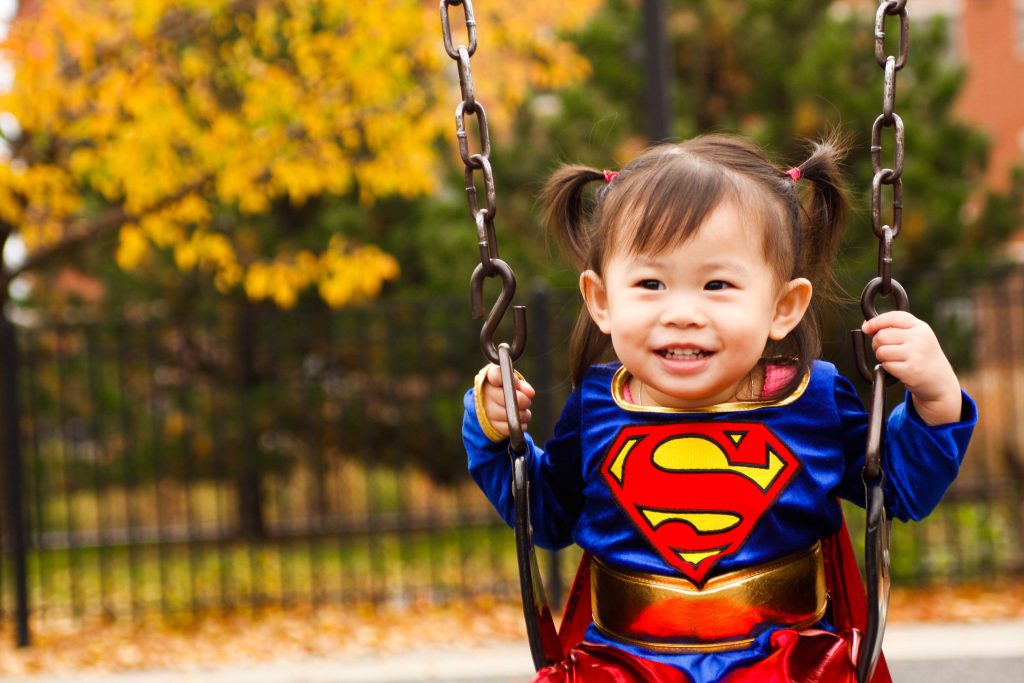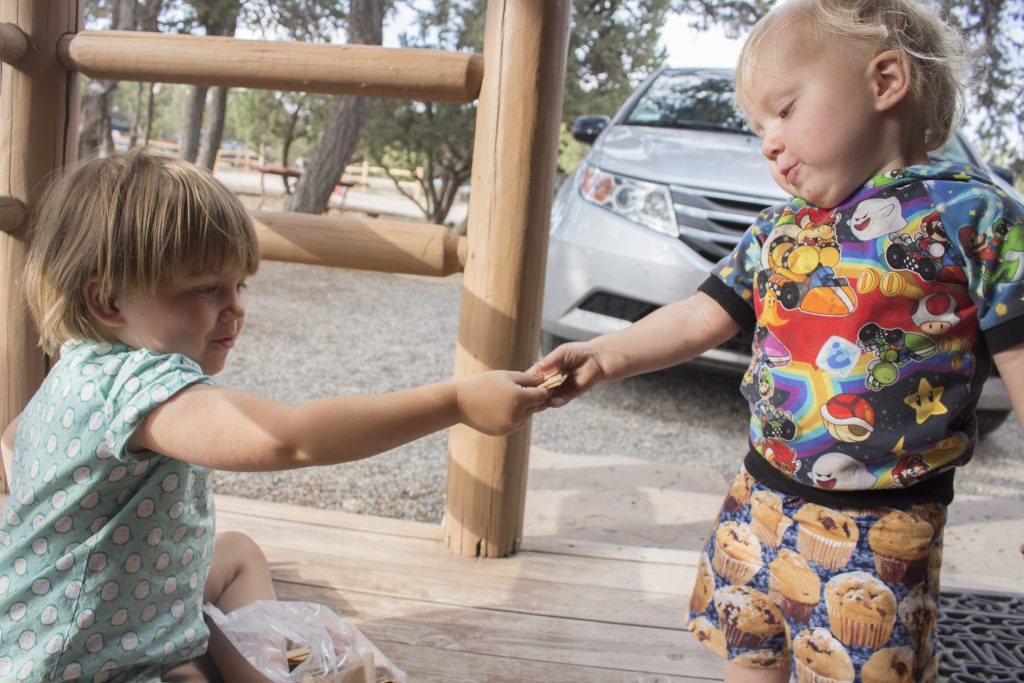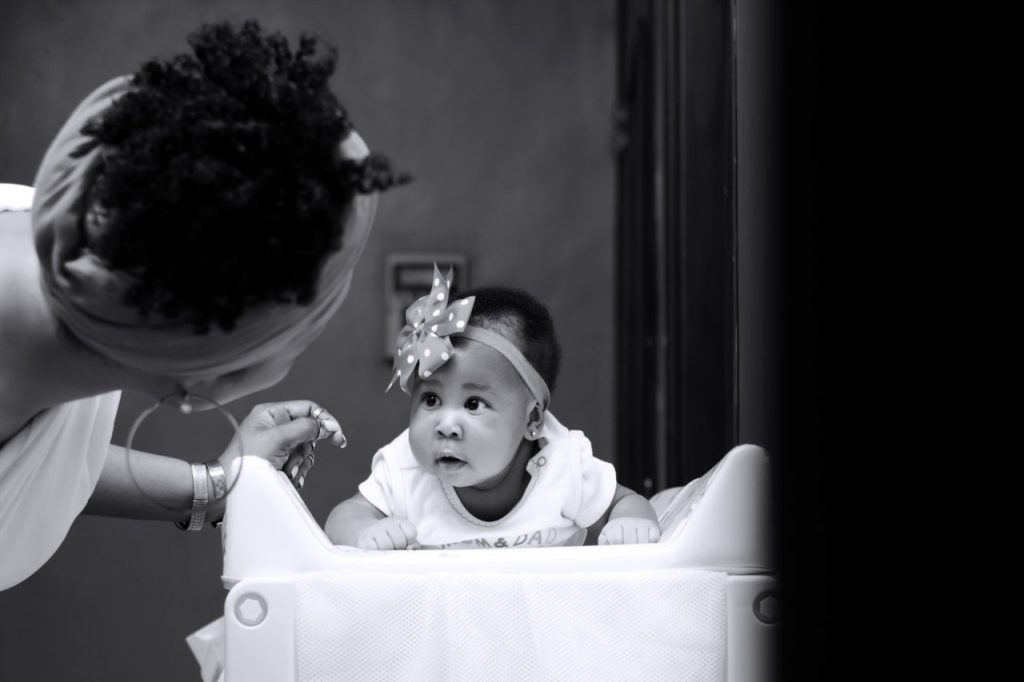What Makes Baby Yoda So Lovable?
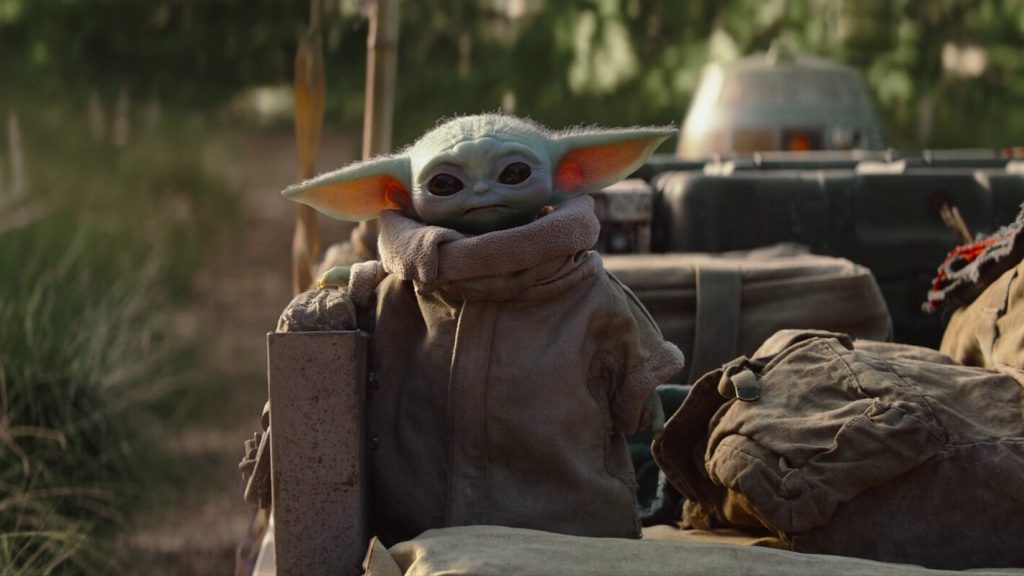
The internet doesn’t agree on much these days. But there is one indisputable fact: Baby Yoda is absolutely adorable.
For the uninitiated, Baby Yoda is an infantile alien and the breakout star of The Mandalorian, a new television series set in the Star Wars film universe. As fans will attest, the youngster—nameless in the series—is clearly modeled on Yoda from the original film trilogy, a small, green-skinned, big-eared figure who can wield “the force,” a mysterious energy that provides one with telekinetic abilities.
The new show’s “mysterious child” has captured the popular imagination with memes of the little tot sipping soup, playing with toys, or just simply sleeping. And Baby Yoda’s appeal goes beyond social media. For instance, Indigenous artists have adopted the child as their own, the latest example in a long tradition of using pop culture symbols to highlight contemporary Indigenous peoples in response to their lack of representation in mainstream culture.
But why is Baby Yoda so appealing? Because, we argue, Baby Yoda is all of us … as babies! And as anthropologists, we believe that the ways in which this creature’s creators have successfully modeled him on human attributes can offer insights into how and why people deem certain beings and certain behaviors undeniably lovable.
Evolutionary scientists have commented on his neotenous or juvenile features: those big, beautiful eyes, oversized ears, and clumsy short limbs that characterize human infants (and many domesticated animals). But honestly, these were all features of the original Yoda as well; while he is cute, he doesn’t hold a candle to Baby Yoda.
Falling back on childlike charm is not a new trick for Disney, which owns the Star Wars franchise. Biologist Stephen Jay Gould once noted that Mickey Mouse has become significantly more neotenous since his introduction in the 1920s. Disney animators have long drawn their princesses with big eyes to convey features that, to Western cultures in particular, suggest youthful innocence.
However, Baby Yoda’s cuteness extends far beyond his adorable appearance. While the show’s cast of humans, aliens, and even droids may find his physical features appealing, his charm is just as much a product of his actions. The behaviors he exhibits and the responses he elicits from other characters are what really melt hearts and change minds.
The Mandalorian series follows a bounty hunter known as Mando, who is a member of a culture called the Mandalorians. Although the show is clearly invested in exploring Mando’s past and motivations—as well as digging into the tenets of Mandalorian society—the central narrative revolves around the unlikely bond between a battle-toughened bounty hunter and the seemingly helpless baby who form a classic odd couple and adorable modern family.
Warning: We will have some spoilers ahead, so we urge you to watch the show, if you’re interested. Mando and Li’l Baby Yoda, or LBY, meet when the bounty hunter takes a job that would, if fulfilled, result in his handing the curious infant over to a nefarious character played by Werner Herzog. Herzog’s intentions for the fate of the child are unclear at first, but his willingness to accept the bounty dead or alive suggests he’s not looking to make friends.
As Mando tries to deliver this baby bounty, he finds himself in a number of dangerous situations, including a battle with a hairy space rhino. Rather than see his “captor” skewered on a horn, Baby Yoda reaches out his hand and uses the force to save Mando. Ultimately, Mando returns the favor and saves the little tyke from the clutches of evil, and then makes it his mission to ensure the Baby Yoda’s safety.
The kind of behavior that Baby Yoda displays when he helps Mando is known as prosocial behavior. Any action that is intended to benefit others or society at large—such as sharing, comforting, or cooperating—qualifies as prosocial. And, over the course of the series, we see LBY do many of these kinds of acts, including healing Mando’s allies and comforting and protecting his bounty hunter companion in times of need.
One way to better understand the relationship between Baby Yoda’s cuteness and his prosocial behavior is through the concept of life history theory, a framework that compares life cycles in different species and helps us make sense of the existence and timing of different life stages.
In this case, LBY is a cute li’l baby, but he is also a 50-year-old li’l baby. Likewise, the original Yoda lived to be 900 years old, suggesting a very, very slow life history for their species.
At 50, Baby Yoda has hit several developmental milestones similar to a 14-month-old human. He’s mobile; humans start crawling by 10 months of age and typically walk well by 15 months. He’s largely nonverbal; babies begin cooing and gooing between 2 and 3 months, speak single sound words as early as 6 months, and put together short sentences by 24 months. He also shows many of the same experimental tendencies we see in human infants, such as repeating a behavior and watching the elicited response from adults.
While nowhere near the snail speed of Yoda life history, humans are also known for having slow life histories relative to many other species. We live for many decades and have long periods of infancy and childhood dependency (periods where children need adults in order to survive). Humans tend to invest significantly in offspring, having a smaller number when compared with many other animals but putting in lots of effort to ensure their survival and success.
Scientists suspect that adorable appearances and charming behavior are essential because human infants are altricial, meaning they cannot move around or care for themselves after birth. Some anthropologists have posited that we should really think of human infants as “extrogestate fetuses” (that is, fetuses on the outside of the body) for the first three months of life, since they are so completely helpless without an adult, and they remain dependent on adults for several years.
Being cute, whether in appearance, behavior, or both, is therefore advantageous. It encourages people to take care of an infant, despite steep costs, such as long sleepless nights or—in the case of Mando and Baby Yoda—the pursuit of dangerous enemy bounty hunters. And being prosocial is equally beneficial in young children: It helps infants elicit care from caregivers including but also beyond their parents. When an infant is cared for by individuals other than their parents this is referred to as “alloparenting.” Alloparents can include siblings, other relatives, and any non-related individual who provides care for an infant. Looking or behaving in ways that endear you to others makes it a whole lot easier to recruit alloparents.
Even though human infants cannot fend for themselves, they are socially precocial, or advanced. Many of their initial behaviors help them form connections to adults—like making eye contact and giggling. Then, starting at around 12 months, human babies begin sharing, by holding up toys or other items for the adults and others around them to see. They often go on to give these objects to others.
And prosociality is not just about outward behavior. It entails the development of empathy and understanding. Studies have shown that infants as young as 2 to 3 days will cry in response to the cries of other infants. These cries are not just a reaction to noise. Babies show more distress in response to other infant cries than comparably loud and unpleasant noises.
As early as 8 months of age, some infants no longer cry in response to the cries of another child. Instead, they behave in ways that appear to comfort the distressed baby, including looking at them, waving to them, vocalizing at them, and even reaching out to touch them. What’s more, human babies are also attuned to and drawn to others who demonstrate similar cooperative behaviors.
At one point in The Mandalorian, the bounty hunter guild leader Greef Karga suggests that they should “make the baby do the magic hand thing,” or use the force to defeat an attacking spacecraft. What does LBY do to address Greef’s demand? The infant mimics Greef and waves ineffectually, not exactly helpful in the circumstance but still a good prosocial effort.
His actions build the social world around him … making Baby Yoda absolutely intoxicating.
Likewise, as humans age, their comforting skills increase, and they begin incorporating behaviors such as hugging and gifting. Unfortunately, they never reach an age when they can use the force to heal injuries—as Baby Yoda does (or at least attempts) on more than one occasion.
When infants offer objects or reach out to adults, they demonstrate care and empathy, which help to establish relationships between themselves and potential caregivers. Their looks may draw people in but their prosocial actions are what keep others interested. And these kinds of behaviors are exactly what convince Mando and basically every other non-evil adult being in the show to rally behind Baby Yoda, to care for him, to protect him, and to make him part of their clan.
So, in the end, it’s not those big eyes, the cooing noises, or the soup slurping that make LBY so unbearably cute—although those moments don’t hurt. It’s his empathy, his care and concern for Mando, and his little three-fingered hand reaching out to gather the force to protect the ones he loves. His actions on the show build the social world around him by eliciting love, making Baby Yoda absolutely intoxicating.
And as it turns out, the construction of that social fabric may have been what the Star Wars universe was always about. In a 2015 interview with CBS, anthropology undergraduate turned filmmaker George Lucas—the creator of Star Wars—compared religious belief to the mystical “force,” noting that in both, human and non-human relationships fulfill “psychological needs that have been put together mostly to create society.”
A human infant may not be able to stop fire or heal a wound simply by waving its hands, but a baby’s cuteness and prosociality are still powerful—inspiring care, love, and community in this galaxy or one far, far away.
This article was republished at Nautilus.





